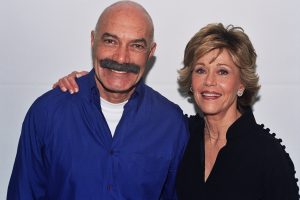Shot on the same soundstage that was used for Mary Poppins, the Disney comedy that catapulted Julie Andrews to international stardom, The Princess Diaries is an enjoyable fairy tale that in its mores and message is not that different from Andrews’s 1964 Oscar-winning picture. This time around, the very graceful Andrews stars as a European Queen, endowed with the task of transforming her shy and awkward granddaughter, who’s unaware of her blue blood, into a real-life princess.
Representing the same kind of light fare as director Gary Marshal’s other work, new comedy is even softer and more old-fashioned than his commercial hits, Pretty Woman or Runaway Bride. Though marketed as an all-family fare, Princess Diaries is mostly targeted at young, impressionable girls, who’re likely to be swept away by the bubbly romantic feel of a movie that every once in while strenuously acknowledges its more “realistic” locale, contempo San Francisco. The picture’s merits–feel-good nature, happy ending, and a terrific debut by Anne Hathaway (TV’s Get Real, should make this G-rated wish-fulfillment, female empowerment fairy tale a box-office hit.
The heroine of Meg Cabot’s young-adult novel is a timid 15-year old San Franciscan, Mia Thermopolis (Hathaway), who’s thrown for a loop when, out of the blue, she learns of her being the heir apparent to the crown of Genovia, a tiny European kingdom (not unlike Monaco, and its late actress-princess, Grace Kelly). Though raised by her single mom, Helen (Goodall), a free-spirited artist-bohemian, Mia is summoned to meet her formidable grandmother, Queen Clarisse Renaldi (Andrews), who informs her that she’s about to begin a series of “princess lessons” under her strict supervision.
The two women, who couldn’t have been more different, instantly clash. Initially, Mia has no intention of dropping her normal life to become the ruler of a far-off, obscure country. At the same time, Clarisse insists that it’s not a matter of choice, it’s her duty. Just as stubbornly-minded as her granddaughter, Clarisse is determined to do a complete makeover of Mia, a sparkling-diamond-in-the-rough, so that she can assume her rightful royal position.
Most of the narrative depicts how Mia’s former social life is turned upside-down. Her toughest decision is whether to remain with her loving mom, or leave everything behind and accept royal responsibilities. In the midst of a series of crises, Mia exclaims, “I don’t want to run my own country, I just want to pass tenth grade!
Recalling Pygmalion (and, of course, its musical and film version, My Fair Lady), and countless other “ugly ducklings turned charming ladies” sagas, Princess Diaries is structured as a comic journey, in which a rough girl who lacks manners is introduced into the upper-class etiquette. Mia–and the audience–goes through the requisite motions of how to walk and talk like a lady, eat with finesse, dress more suavely, dance gracefully, and so on.
Pandering to older viewers, the film also contains intimations of latent romantic yearnings between Clarisse and Joseph (Elizondo), her head of security, assigned to escort and protect Mia. Older viewers may even shed a tear in the scene, in which the clumsy Mia learns how to gracefully glide across the floor while following Joseph’s lead. After Mia leaves the room, Joseph beckons Clarisse to join him in a dance. Elizondo, and particularly Andrews, are so naturally elegant, that even when they’re hamming it up, as they do here, they’re still charming.
At first, Mia’s school friend are upset by her sudden notoriety and subsequent transformation. Her best friend, Lily Moscovitz (Matarazzo), a bright Jewish brat who runs a local radio show that propagates environmental and political activism, is not only horrified by Mia’s overnight fame but is also fearful of losing their intimate bond. Additional tension is provided by Mia’s nemesis, Lana (recording artist Mandy Moore), as the school’s most popular and glamorous girl.
Th most striking element of Princess Diaries is its centrist ideology, the way it compromises seemingly divergent values: royalty vs. working-class, blue-blood privileges vs. more normal growing pains. The whole narrative is based on a series of dichotomies, not just of values, but of girlfriends and boyfriends. Hence, not neglecting the love interest, Mia is placed between two different boys, ending up with the one who’s outside her milieu, again indicating the film’s reconciliatory nature.
As always, Marshall’s philosophy is that a movie should have “something” for everyone. With the notable exception of his adult fare, the disastrous wannabe kinky comedy, Exit Eden, he has been (re)making the same kind of story; it may be the only thing that Marshall, an old TV pro, is capable of doing. In this movie, he’s still polarizing good and bad, rich and poor, in the same simplistic way he had done in Flamingo Kid, his second outing, back in 1984.
Contributing to the film’s overall success is the star-quality performance by screen neophyte Hathaway, who’s equally adept at a goofy physical comedy and more serious romantic melodrama. The beautiful Hathaway is someone to watch: With the right choice of roles, she could become a much sought-after Hollywood leading actress.
Credits
Disney Pictures Presentation
US dist: Buena Vista
Int’l dist: Buena Vista Int’l
Prods: Whitney Houston, Debra Martin Chase, Mario Iscovich
Scr: Gina Wendkos, based on the novel by Meg Cabot
Cinematographer: Karl Walter Lindenlaub
Prod des: Mayne Berke
Ed: Bruce Green
Music: John Debney
Cast
Julie Andrew, Anne Hathaway, Hector Elizondo, Heather Matarazzo, Caroline Goodall, Mandy Moore, Robert Schwartzman










